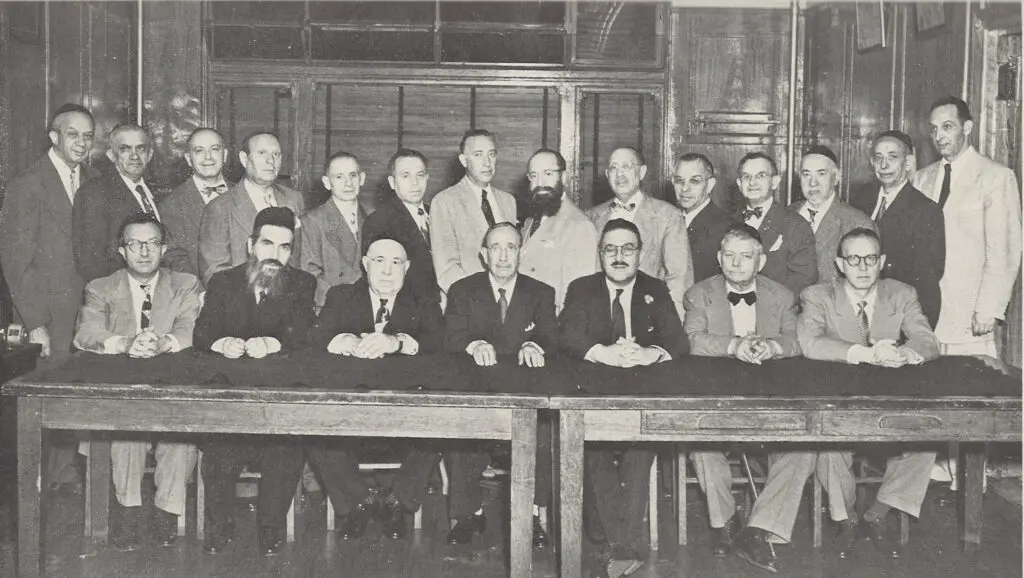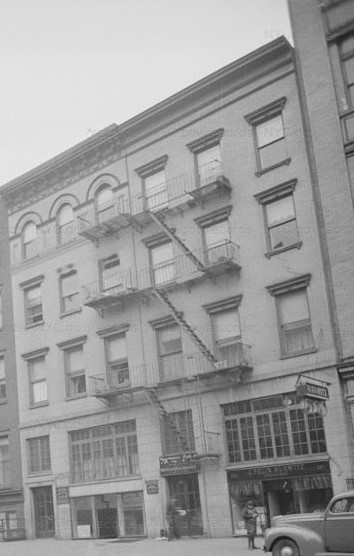Our Past / Our History
The UNITED HEBREW COMMUNITY OF NEW YORK was founded in 1901 on East Broadway in the Lower East Side of Manhattan, the cradle of American Jewry. The founder was Alter Benzion Shapiro, a leading banker and community leader from within the overpopulated tenement community. The original name of the organization was incorporated as the ADATH ISRAEL OF NEW YORK, pronounced in Yiddish, “Adas Yisroel of New York,” The name was officially changed some decades later to the UNITED HEBREW COMMUNITY OF NEW YORK, ADATH ISRAEL OF NEW YORK. Unlike all the “landsmenshaften” that flourished at the time, each serving the immigrants from only one or two European towns, the UNITED HEBREW COMMUNITY OF NEW YORK enrolled a cross-section of the entire Jewish Community in New York. The primary purpose of the organization was to provide a free synagogue and proper burial for those who were refused membership in a small society because of ill health, age, or meager finances.
The UNITED HEBREW COMMUNITY OF NEW YORK purchased both 201 and 203 East Broadway at the turn of the 20th century. We established a Shul (synagogue) and office in the two adjoining buildings, which we occupied until 2015. The organization immediately flourished as scores of disenfranchised immigrants lined up to join. By 1909 there were more than 9000 members eclipsing all other similar groups. The synagogue, under the guidance of our Rabbi, provided daily services to the community every day of the year. We fed and left our doors open to shelter scores of homeless. Our membership continued to grow as each new generation was born and died.
The UNITED HEBREW COMMUNITY OF NEW YORK supported the needs of its member families who assisted relatives immigrating from Europe. Families who suffered during the Depression years were also assisted with donations and free loans. Everyone was given the opportunity to join and were only required to make a small deposit while extending their remaining obligations to be paid, interest-free, over a period of years. Cemetery parcels were continuously purchased in most Jewish cemeteries to meet the ever-growing needs of the membership.
During the heart of the influenza epidemic, the organization interred in its cemetery grounds more than 100 people almost every day. The majority were primarily young children from crowded tenements. No family was charged for the cemetery or burial. Hundreds of volunteer members worked in the organization’s Chevra Kadisha six days a week to provide the required dignity and service to heal the community. Our historical files, records, and books indicate that on the worst day of the tragedy, 186 burials were completed.
Click here for an announcement published on October 28, 1918, in the secular Yiddish newspaper The Forward. This was the Foward's first rabbinic pronouncement on the then-influenza epidemic and was written by our first Rabbi, Rabbi Gavriel Zev Margolis (Reb Velvel). (The rough English translation can be found here.)
All the membership records and cemetery maps were secured in vaults.
The UNITED HEBREW COMMUNITY OF NEW YORK quietly supported the needs of its member families who were fortunate to have rescued relatives from Europe. Cemetery parcels were continuously purchased in most Jewish cemeteries to meet the ever-growing needs of the membership.

Members were first permitted to enroll through the use of telephone and mail.
The cemetery maps were verified and redrawn and are still updated each day. New maps are drawn since then as they are required.
All the minutes of countless meetings until 1960 were written in Yiddish. A massive 12-year effort to translate these documents into English was completed in 1972.
The UNITED HEBREW COMMUNITY OF NEW YORK opened a community facility in their buildings on East Broadway where members could gather for life cycle events. This facility was also offered free to other organizations.
Every membership record was microfilmed, archived, and secured.

Computer programs were designed to secure and upgrade the quality of the files, record keeping, and the response time of the staff when a death occurs.
In 1990 the gradual decline of the Jewish population on the Lower East Side of Manhattan accelerated. Sadly countless small burial societies and organizations were losing members at a dramatic pace. This influenced many smaller organizations to request that the UNITED HEBREW COMMUNITY assume their daily administration in order to maintain their identity and benefits.
The community facility was made available for those in need during the 9/11 tragedy. The office staff provided emergency assistance for those escaping the destruction of the Twin Towers. The office of the UNITED HEBREW COMMUNITY was called by the NYC government to assist, if needed, with the internment of those that perished that day. In the aftermath of 9/11, the families of victims were provided with all their burial needs.
In 2015 the offices on the Lower East Side were closed after a new location was purchased in Woodmere New York, part of the Five Towns on Long Island. This area of New York is one of the newer locations where the Jewish community is growing and flourishing. Many, of all ages, with their families, currently reside there.


